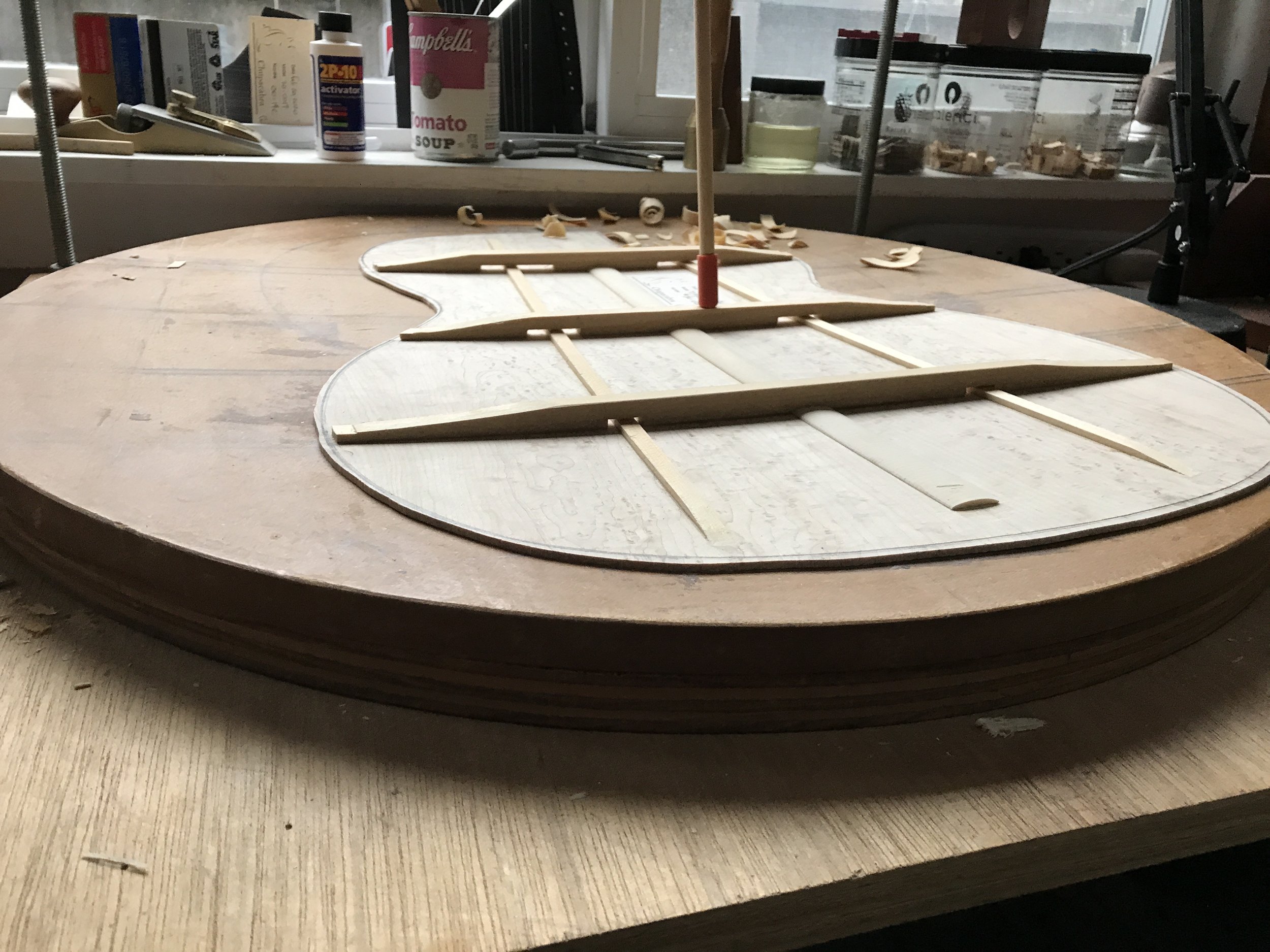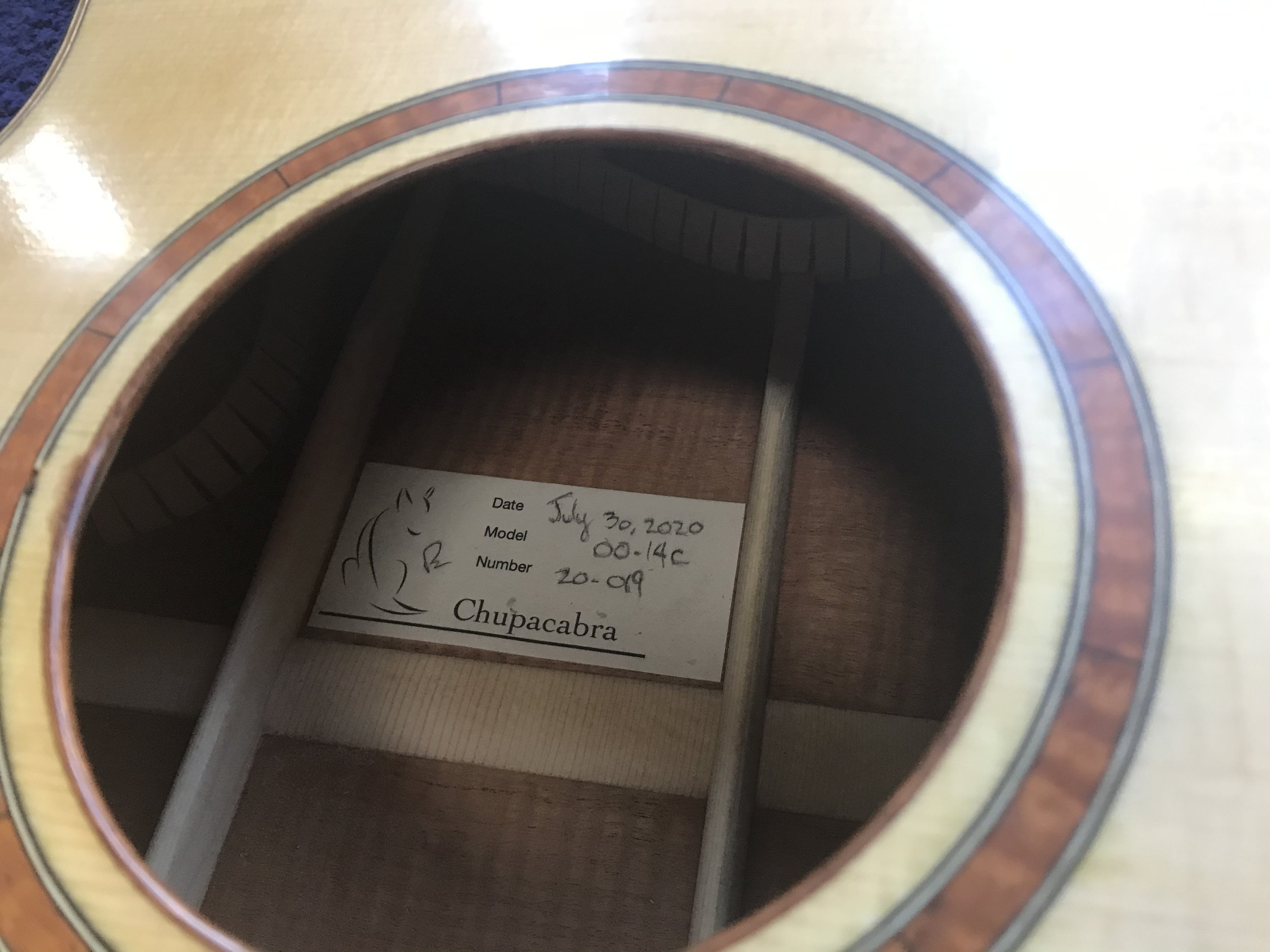Guitar Description
I work with you to create a responsive instrument that complements your playing style and accomodates your physical needs. My steel string guitar starts out with dimensions similar to a Martin 00, 000 or OM box with a modified Martin X-bracing pattern. The OM is a long scale (25.4 inches) with 14 frets clear of the body, while the 00 and 000 are usually short-scale (24.9 inches) and available with either 12 or 14 frets clear of the body.
My nylon builds are a long scale (25.5 inches), 00 or 000 size, with 12 frets clear of the body. The bracing pattern for my nylon guitars was pioneered by the late great Jimmy D’Aquisto -utilizing a light X-brace and fan brace combination that is light and loads uniformly to provide good sound projection and a balanced tonal response. The back bracing integrates vertical tone bars that are light but add rigidity so as to complement the tonal response of the top.

Quality tonewoods are important and I build my guitars using sustainably sourced woods that have uncommon figure, and outstanding tonal properties. A great guitar can be made from common tonewoods. I have some stunning domestically sourced back and side woods, both hard and soft Maple, Cherry, and locally sourced Black Acacia. I have FSC certified Indian Rosewood, as well as Cocobolo and other sustainably sourced Central American Rosewoods.
The guitar back and sides attract the eye, but for those who play, it is the top that captures the heart. The top wood, top bracing and carving are critical in determining a guitars voice and its tonal presence. My preferred top woods are Englemann and Adirondack Spruce, and Port Orford Cedar. I have a modest collection of these woods and tops to match to your back and sides.
Necks are Honduran mahagony, fitted to the body with a traditional dovetail joint. I have all these woods are on hand, so give me a call and it is likely we can find something that will fit your needs.

My preferred finish for nylon string and fingerstlye guitars is shellac, padded on using the French polish method. Shellac affords the guitar the best tonal response, is environmentally friendly and easliy repaired. Because shellac is not as durable as modern finishes it may benefit from an occasional touch up. For Bluegrass or traditional style steel string guitars where players are using a flat pick, I place a pick guard on the top and finish it with brushed-on varnish. Though not as acoustically transparent as shellac, vanish cures harder and provides added protection from the pick as well as the occasional bump or mishap.

